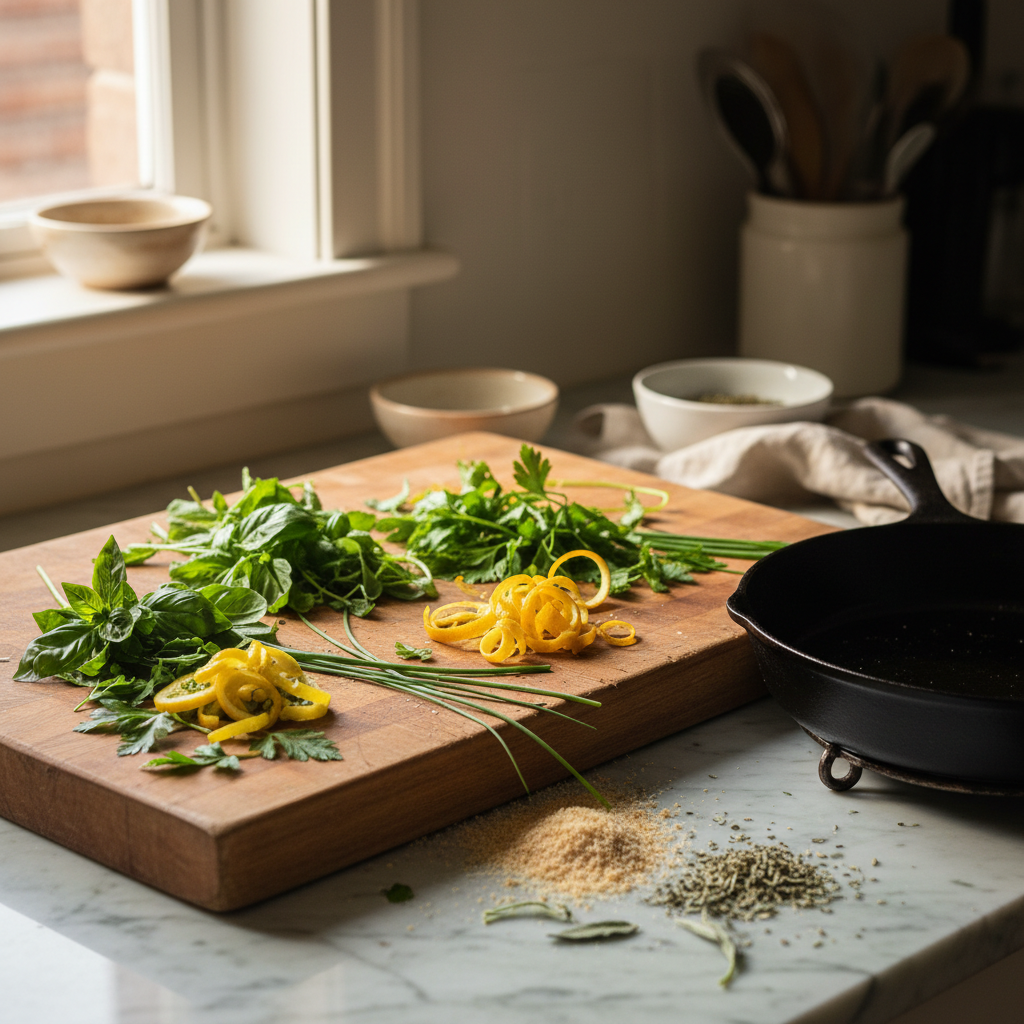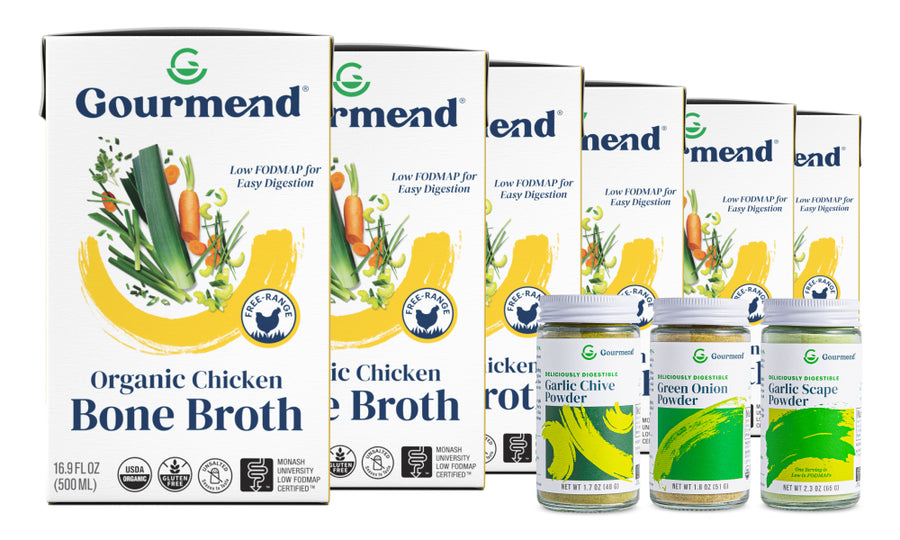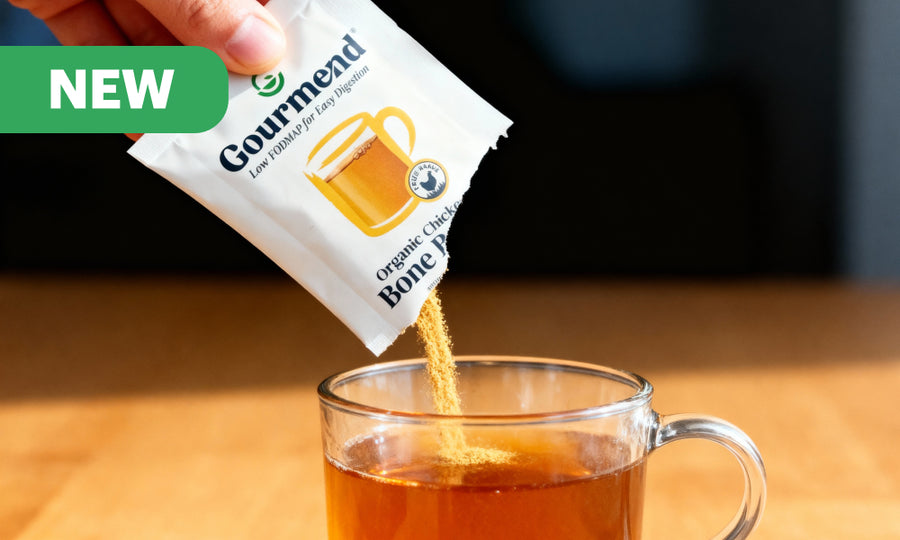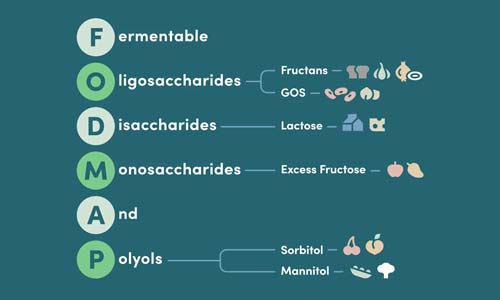Low FODMAP Pasta Sauce: Bold Gourmet Guide for Easy Digestion

Key Takeaways
- Traditional pasta sauces often contain high FODMAP ingredients that can cause digestive issues for people with IBS.
- Common triggers in pasta sauces include onion, garlic, and lactose-rich creams.
- Low FODMAP pasta sauces offer a flavorful alternative without causing digestive discomfort.
- It is possible to enjoy bold, gourmet pasta sauces while managing gut health.
Table of Contents
- Bold Gourmet Pasta Sauces That Love Your Gut Back
- The Science Behind Gut-Friendly Sauce Ingredients
- Crafting Your Perfect Low FODMAP Tomato Sauce
- Transforming Family Recipes: Smart Ingredient Swaps
- Store-Bought vs. Homemade: Finding Your Perfect Match
- Choosing the Right Pasta for Your Low FODMAP Sauce
- Mastering Umami Without Garlic or Onion
- Building a Balanced, Satisfying Pasta Dinner
- Professional Techniques for Restaurant-Quality Results
- Store-Bought vs. Homemade: Which Delivers Better Results?
- Building Complete, Satisfying Low FODMAP Pasta Meals
- Advanced Flavor Techniques for Professional Results
- The Verdict: Your Best Path to Flavorful, Gut-Friendly Pasta
Bold Gourmet Pasta Sauces That Love Your Gut Back
Traditional pasta sauces pack a flavorful punch, along with digestive distress for millions managing IBS. The culprits? High FODMAP ingredients like onion bulbs, garlic cloves, and lactose-heavy creams that trigger bloating, cramping, and worse. But here's the game-changer: low fodmap pasta sauce doesn't mean sacrificing the bold, gourmet flavors you crave.
At Gourmend Foods, we've cracked the code on delivering restaurant-quality depth using gut-friendly alternatives. Our customers discover that chive sprigs, scallion greens, and umami-rich nori seaweed create the same satisfying complexity, without the digestive aftermath. Whether you're new to the low FODMAP lifestyle or a seasoned home chef, this guide reveals how to transform any sauce recipe into a digestively gentle masterpiece.
If you're interested in learning more about low FODMAP sauces and how they can fit into your diet, check out our in-depth guide for additional tips and recipes.
What Makes a Pasta Sauce Low FODMAP?
A sauce that eliminates high FODMAP triggers (onion, garlic, excess lactose) while keeping tomatoes under 100g per serving and using safe alternatives like chives and leek greens for aromatic depth.
The Science Behind Gut-Friendly Sauce Ingredients

FODMAPs (fermentable oligosaccharides, disaccharides, monosaccharides, and polyols) are short-chain carbohydrates that resist digestion in sensitive individuals. In pasta sauces, the biggest offenders lurk in seemingly innocent places: onion powder in "spice blends," garlic-infused oils made incorrectly, and high-lactose dairy additions.
The solution isn't elimination, it's intelligent substitution. Gourmend's approach harnesses the green parts of leeks and scallions, which contain minimal FODMAPs compared to their white bulb counterparts. Our broths incorporate nori seaweed and oyster mushrooms for that essential umami backbone, delivering the savory complexity traditionally achieved through garlic and onion.
| High FODMAP Ingredients | Low FODMAP Alternatives | Flavor Impact |
|---|---|---|
| Onion bulb | Chive sprigs | Sharp, aromatic bite |
| Garlic cloves | Garlic-chive stems | Pungent, earthy depth |
| Heavy cream | Lactose-free cream | Rich, velvety texture |
Crafting Your Perfect Low FODMAP Tomato Sauce
Start with quality canned tomatoes (≤100g per serving) and build your flavor foundation with Gourmend shelf-stable broth carton for liquid depth. Heat 2 tablespoons olive oil in a heavy-bottomed pan, then sauté 2 tablespoons chopped chive sprigs until fragrant, about 30 seconds.
Add your tomatoes, crushing them by hand for rustic texture, then pour in ¼ cup of broth to prevent sticking. Season with fresh basil, oregano, and a pinch of salt. Simmer 15-20 minutes until the sauce reduces and concentrates. The key technique: reserve ½ cup pasta cooking water to adjust consistency, the starch creates silky cohesion without cream.
For more inspiration on delicious pasta dishes that fit a low FODMAP lifestyle, explore this recipe for low FODMAP broccoli sausage pasta.
Transforming Family Recipes: Smart Ingredient Swaps
Every family sauce recipe can become gut-friendly with strategic substitutions. The golden rule: replace high FODMAP aromatics with their safe counterparts while maintaining the same cooking techniques. When Nonna's recipe calls for "1 large onion, diced," substitute with 3 tablespoons chopped chive sprigs sautéed at the same stage.
For cream-based sauces, lactose-free alternatives perform identically in cooking, they won't curdle or separate. Gourmend's ingredient policy limits unique substitutions to three per recipe, ensuring simplicity without sacrificing flavor complexity. This approach works whether you're adapting a simple marinara or a complex puttanesca.
Real Recipe Makeover Example
Original: Garlic (3 cloves), yellow onion (1 large), heavy cream (½ cup)
Converted: Garlic-chive stems (2 tablespoons), chive sprigs (3 tablespoons), lactose-free cream (½ cup)
Store-Bought vs. Homemade: Finding Your Perfect Match

Homemade Low FODMAP Sauces
Best for: Complete ingredient control and custom flavor profiles
Using Gourmend shelf-stable broth carton as your liquid base guarantees consistent flavor without mystery "natural flavors" that often hide FODMAP triggers. You control every ingredient, adjust seasoning to preference, and batch-cook for the week ahead.
Certified Store-Bought Sauces
Best for: Convenience when you've verified the complete ingredient list
Several brands offer low FODMAP certified options, but formulations change frequently. The critical skill: reading labels for hidden triggers like "spices" (may contain onion powder) or "natural flavors" (source unclear). Always check the most recent ingredient panel, even on familiar products.
| Factor | Homemade | Store-Bought |
|---|---|---|
| Ingredient Control | Complete transparency | Label dependent |
| Prep Time | 30 minutes active | Zero prep |
| Cost per serving | $0.75-$1.25 | $1.50-$3.00 |
| Customization | Unlimited | As-is only |
Choosing the Right Pasta for Your Low FODMAP Sauce
Rice-based pastas dominate the low FODMAP landscape, with white rice pasta offering the cleanest flavor profile that won't compete with your carefully crafted sauce. Brown rice versions add nuttiness and fiber, though they require precise timing, overcook by even a minute and they turn mushy.
Portion awareness matters critically here. Stick to 1 cup cooked (about 145g) for rice pasta to stay within safe FODMAP limits. Quinoa pasta delivers higher protein but carries a distinct earthy taste that pairs best with robust tomato-based low fodmap pasta sauces rather than delicate cream varieties.
For a comprehensive overview of pasta options that are suitable for sensitive diets, see our article on low FODMAP pasta.
Beyond Traditional Pasta
Spaghetti squash and spiralized zucchini ("zoodles") stretch your sauce further while adding vegetables to the meal. These options work particularly well when you're managing multiple dietary restrictions simultaneously, they're naturally gluten-free, grain-free, and virtually unlimited from a FODMAP perspective.
Caution with legume pastas: Chickpea and lentil varieties require strict portion control, limit to ⅓ cup cooked maximum. Mix them half-and-half with rice pasta for protein benefits without FODMAP overload.
Mastering Umami Without Garlic or Onion
Building complex flavor in low fodmap pasta sauce relies on technique over prohibited ingredients. Start by blooming dried herbs in oil, heat 1 teaspoon oregano or basil in olive oil for 30 seconds until fragrant. This simple step releases essential oils that would otherwise remain locked in the dried leaves.
Gourmend broths excel here because they incorporate nori seaweed and oyster mushrooms during the cooking process, creating natural glutamates that enhance savory depth. Layer fresh herbs at different stages: hardy ones like thyme early in cooking, delicate basil and chives as finishing touches.
Acid brightens everything, a squeeze of lemon juice or splash of wine vinegar in the final minutes balances tomato sweetness and makes all flavors more pronounced. For heat-sensitive individuals, start with tiny amounts and build gradually.
Building a Balanced, Satisfying Pasta Dinner

Transform your low fodmap pasta sauce into a complete meal by adding precisely portioned proteins and vegetables. Grilled chicken breast (4-6 oz) or firm tofu (½ cup cubed) provide substantial protein without FODMAP concerns. For plant-based options, cooked lentils work beautifully, just respect the ⅓ cup maximum to avoid digestive issues.
Vegetable additions require strategic timing. Green beans (limit 15 beans per serving) and carrots can simmer directly in the sauce during the last 10 minutes. Leafy greens like spinach or arugula wilt perfectly when stirred in just before serving, adding color and nutrients without cooking time.
Complete the meal with a simple side salad dressed in lemon vinaigrette, and finish with FODMAP-friendly fruit, ½ cup strawberries or ¾ cup blueberries satisfy sweet cravings while supporting digestive health.
Professional Techniques for Restaurant-Quality Results
Temperature control separates amateur from professional results. Maintain a gentle simmer, vigorous boiling breaks down tomato structure and creates watery, separated sauces. The sweet spot: tiny bubbles breaking the surface occasionally, allowing flavors to concentrate over 15-20 minutes.
Reserved pasta water becomes your secret weapon for perfect consistency. The starch-enriched water bonds sauce to noodles better than plain water or additional broth. Add it gradually, 2 tablespoons at a time, until you achieve glossy, clingy texture.
Batch cooking transforms weeknight cooking and saves hours. Make double portions and freeze sauce in meal-sized containers for up to three months. Label each container with the date and intended serving size, this prevents accidental FODMAP overload when you're rushing to get dinner on the table.
Store-Bought vs. Homemade: Which Delivers Better Results?
The choice between homemade and store-bought low fodmap pasta sauce depends on your priorities: complete ingredient control or convenience. Each approach offers distinct advantages for different cooking styles and schedules.
| Factor | Homemade | Store-Bought |
|---|---|---|
| Ingredient Control | Complete transparency | Label dependent |
| Flavor Customization | Unlimited adjustment | Fixed formula |
| Prep Time | 45-60 minutes | 0 minutes |
| Cost per Serving | $0.75-$1.25 | $1.50-$3.00 |
| FODMAP Guarantee | Your control | Certification required |
Homemade sauces excel when you need precision. Building from Gourmend shelf-stable broth cartons ensures the umami foundation stays FODMAP-safe while delivering restaurant-quality depth. You control every ingredient, adjust acidity levels, and create signature flavor profiles that store-bought versions can't match.
Store-bought options work for emergency meals but require careful label scrutiny. Hidden FODMAP triggers lurk in "natural flavors," "spice blends," and wheat-derived thickeners. Even certified low FODMAP products can change formulations without prominent notification.
The smart approach combines both: batch-cook homemade sauce monthly using Gourmend broths as your flavor base, then keep one certified jar as backup for truly hectic weeks.
Building Complete, Satisfying Low FODMAP Pasta Meals

A well-constructed low fodmap pasta sauce becomes the centerpiece of balanced, nourishing meals that satisfy without triggering symptoms. Strategic protein and vegetable additions transform simple pasta into restaurant-worthy dining.
Protein portions that work: Four ounces grilled chicken breast, three ounces lean ground beef, or one-half cup firm tofu provide satisfying substance without FODMAP concerns. Lentils add plant-based protein but require strict portion control, limit to one-third cup cooked to stay within safe thresholds.
Vegetable additions expand nutrition and color. Green beans (maximum 15 beans), sliced carrots, baby spinach, and bell peppers integrate seamlessly into tomato-based sauces. Roast vegetables separately with olive oil and fresh herbs, then fold into finished sauce for optimal texture contrast.
Smart meal timing prevents digestive overwhelm. Start with a small mixed green salad dressed in lemon vinaigrette, serve moderate pasta portions (1 cup cooked rice pasta), and finish with FODMAP-friendly fruit, eight strawberries or half-cup blueberries provide natural sweetness without triggering symptoms.
This approach creates abundant, satisfying meals that never feel restrictive while keeping your digestive system comfortable and happy.
Advanced Flavor Techniques for Professional Results
Professional-level low fodmap spaghetti sauce relies on layered flavor development and precise timing rather than high-FODMAP shortcuts. These techniques elevate homemade sauces beyond basic tomato preparations.
Spice blooming unlocks deeper aromatics. Heat one tablespoon olive oil in your sauce pan, add dried oregano and basil for thirty seconds until fragrant, then immediately add canned tomatoes. This technique releases essential oils that raw spices can't provide, creating complexity that rivals traditional garlic-forward sauces.
Reduction concentrates flavors naturally. Simmer your sauce uncovered for fifteen to twenty minutes, stirring occasionally, until it coats the back of a spoon. The concentrated result delivers intense tomato flavor that pairs beautifully with Gourmend broth's umami foundation.
Chef's Secret: Add one tablespoon Gourmend shelf-stable broth carton during the final five minutes of cooking. The concentrated umami from nori seaweed and oyster mushrooms mimics the depth typically provided by slow-cooked onions and garlic.
Finishing techniques matter enormously. Remove sauce from heat, stir in fresh basil leaves and a drizzle of high-quality olive oil, then add freshly grated Parmesan if tolerated. These final additions preserve bright flavors that cooking would diminish.
Proper storage maintains quality for future meals. Cool completely before refrigerating, freeze in single-serving containers, and always label with preparation date and intended portion size.
For more on the science behind FODMAPs and their impact on digestion, see this peer-reviewed article on FODMAPs and gut health.
The Verdict: Your Best Path to Flavorful, Gut-Friendly Pasta
Creating exceptional low fodmap pasta sauce requires understanding substitution strategies and ingredient selection. For additional practical tips on managing IBS and diet, refer to the NHS guide to diet and IBS.
Frequently Asked Questions
What ingredients should I avoid in traditional pasta sauces if I want to follow a low FODMAP diet?
Avoid high FODMAP ingredients like onion bulbs, garlic cloves, and lactose-rich creams, as these commonly trigger digestive discomfort. Also watch for hidden sources such as onion powder in spice blends and excess tomato quantities over 100g per serving.
How can I replicate the flavor of garlic and onion in low FODMAP pasta sauces without triggering IBS symptoms?
Use garlic-infused oil made properly, chive sprigs, scallion greens, and leek greens to create aromatic depth. Fresh herbs and asafoetida can also add complexity and mimic those savory notes without causing digestive issues.
What are some effective ingredient substitutions to create a rich and umami-packed low FODMAP pasta sauce?
Incorporate umami-rich ingredients like nori seaweed and oyster mushrooms alongside chives and leek greens. These provide satisfying depth and complexity, making your sauce bold and gourmet while staying gentle on digestion.
Is it better to use store-bought low FODMAP pasta sauces or make homemade versions for optimal gut health and flavor?
Both options can work well depending on your needs. Store-bought low FODMAP sauces like those from Gourmend offer convenience and consistent gut-friendly quality, while homemade versions let you customize flavors and ingredients precisely to your taste and tolerance.





